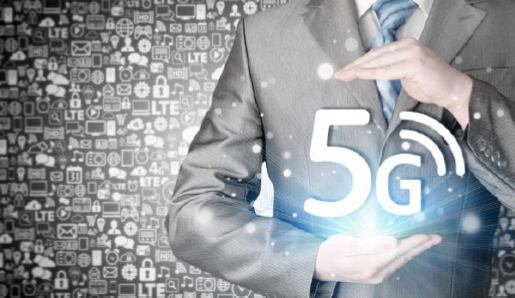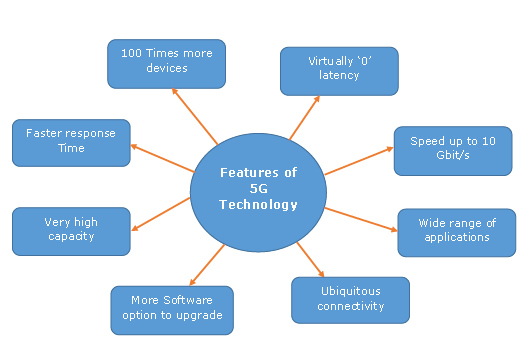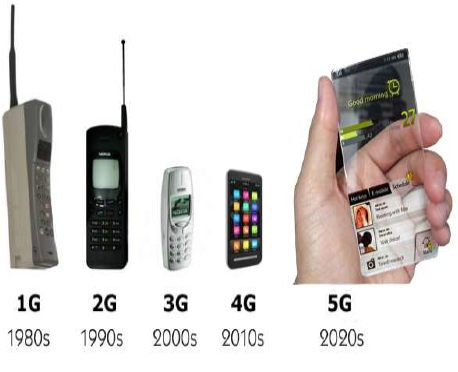Radio technologies have evidenced a rapid and multidirectional evolution with the launch of the analogue cellular systems in 1980s. Thereafter, digital wireless communication systems are consistently on a mission to fulfil the growing need of human beings (1G, …4G, or now 5G).

So, this article describes the 5G technology emphasizing on its salient features, technological design (architecture), advantages, shortcomings, challenges, and future scope.
Salient Features of 5G
5th Generation Mobile Network or simply 5G is the forthcoming revolution of mobile technology. The features and its usability are much beyond the expectation of a normal human being. With its ultra-high speed, it is potential enough to change the meaning of a cell phone usability.

With a huge array of innovative features, now your smart phone would be more parallel to the laptop. You can use broadband internet connection; other significant features that fascinate people are more gaming options, wider multimedia options, connectivity everywhere, zero latency, faster response time, and high quality sound and HD video can be transferred on other cell phone without compromising with the quality of audio and video.
5G - Technology
If we look back, we will find that every next decade, one generation is advancing in the field of mobile technology. Starting from the First Generation (1G) in 1980s, Second Generation (2G) in 1990s, Third Generation (3G) in 2000s, Fourth Generation (4G) in 2010s, and now Fifth Generation (5G), we are advancing towards more and more sophisticated and smarter technology.

What is 5G Technology?
The 5G technology is expected to provide a new (much wider than the previous one) frequency bands along with the wider spectral bandwidth per frequency channel. As of now, the predecessors (generations) mobile technologies have evidenced substantial increase in peak bitrate. Then — how is 5G different from the previous one (especially 4G)? The answer is — it is not only the increase in bitrate made 5G distinct from the 4G, but rather 5G is also advanced in terms of −
- High increased peak bit rate
- Larger data volume per unit area (i.e. high system spectral efficiency)
- High capacity to allow more devices connectivity concurrently and instantaneously
- Lower battery consumption
- Better connectivity irrespective of the geographic region, in which you are
- Larger number of supporting devices
- Lower cost of infrastructural development
- Higher reliability of the communications
As researchers say, with the wide range of bandwidth radio channels, it is able to support the speed up to 10 Gbps, the 5G WiFi technology will offer contiguous and consistent coverage − “wider area mobility in true sense.”
5G - Architecture
Architecture of 5G is highly advanced, its network elements and various terminals are characteristically upgraded to afford a new situation. Likewise, service providers can implement the advance technology to adopt the value-added services easily.
However, upgradeability is based upon cognitive radio technology that includes various significant features such as ability of devices to identify their geographical location as well as weather, temperature, etc. Cognitive radio technology acts as a transceiver (beam) that perceptively can catch and respond radio signals in its operating environment. Further, it promptly distinguishes the changes in its environment and hence respond accordingly to provide uninterrupted quality service.